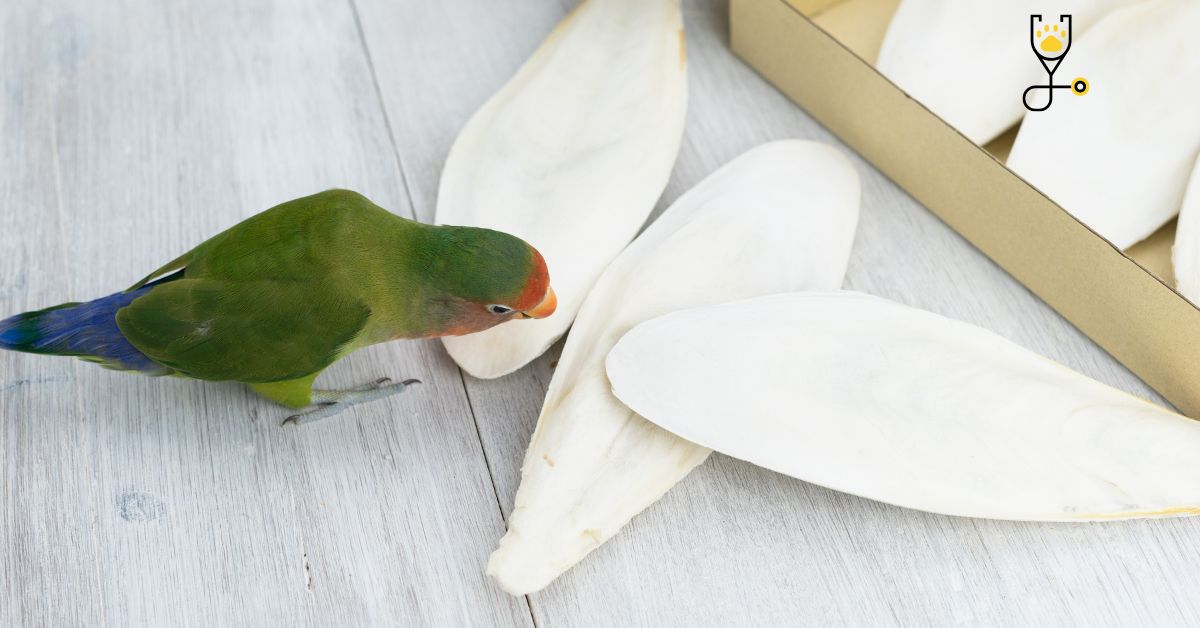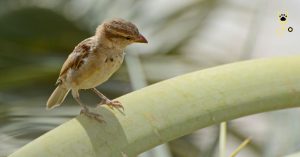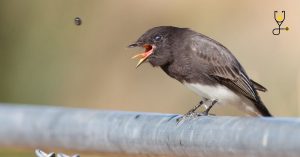Taking care of a pet bird can be both rewarding and challenging. One important factor to consider when looking after your avian companion is proper nutrition—not just what type of food they should eat, but also providing essential vitamins, minerals, and other nutrients which are necessary for their overall health. This post will explore one such way of ensuring that your bird gets enough of these important elements: introducing a cuttlebone into the enclosure. Cuttlebones help provide birds with a natural source of calcium while allowing them to groom their beaks naturally too. Read on to find out all about how this unique tool plays an integral role in keeping your feathered friend healthy!
Ways how a cuttlebone helps
1. Natural Source of Calcium
A cuttlebone is a hard, chalky substance that comes from the internal shell of a species of mollusk called the cuttlefish. This material is composed mainly of calcium carbonate, making it an effective way to provide companion birds with a natural source of this important mineral. Calcium helps keep bones and muscles strong throughout their lifespan as well as helping regulate other bodily functions.
Also read: Why Pet Birds Have Flaky Beaks
2. Grooming Tool for Beaks
In addition to being a source of calcium, cuttlebones can also serve another vital function in pet bird care: providing an opportunity for beak trimming and grooming! The abrasive surface of the cuttlebone helps naturally scrape away any excess keratin on the beak, which can otherwise build up over time. This keeps their beaks in good condition and helps maintain their overall health.
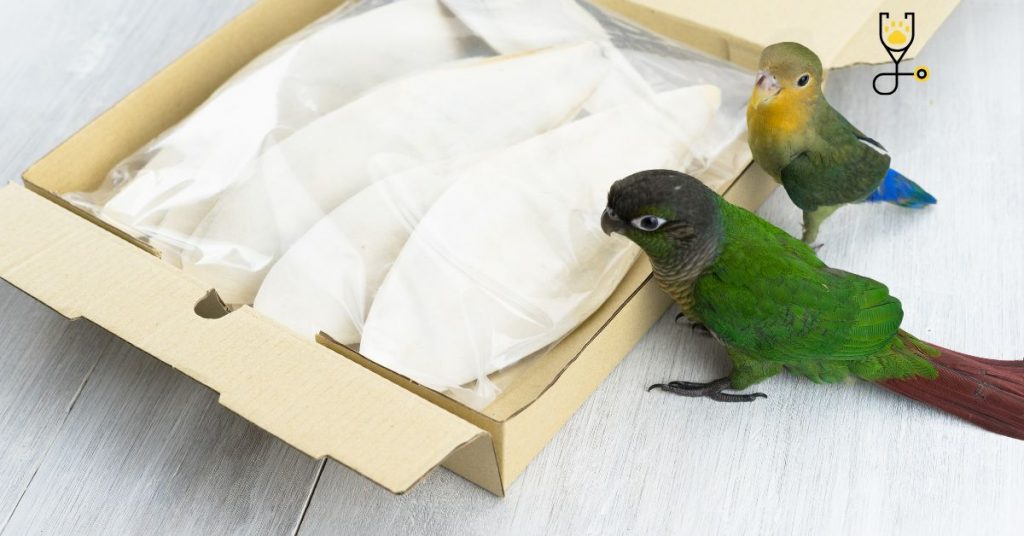
3. Stimulating Activity
A cuttlebone isn’t just a passive nutrient source – it also provides birds with an interesting activity! Many companion birds enjoy chewing on the bone, as well as gnawing off small pieces of the material to eat. This can help keep them engaged and entertained throughout the day, and can even reduce potential boredom-driven behavior problems.
4. Easy to Clean
The surface of a cuttlebone is relatively smooth, so it won’t collect food particles or debris like other perches or toys might. Because of this, it’s easy to keep clean and hygienic with a simple wipe down or even an occasional soak in warm, soapy water.
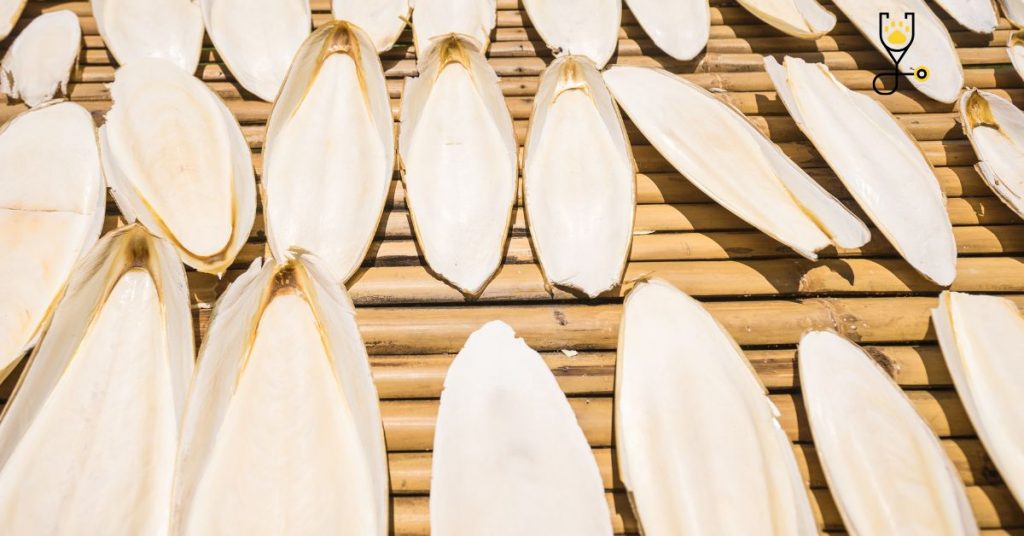
5. Budget-Friendly
Cuttlebones are relatively inexpensive, making them a great option for bird owners on a budget. They can often be found at pet stores, online shops, and even some grocery stores.
6. Variety of Sizes
Cuttlebones come in a variety of sizes and shapes, allowing you to find the perfect fit for your particular avian companion – whether they’re small parakeets or large macaws! This ensures that all birds have access to this beneficial resource regardless of their size.
7. Long-Term Use
Unlike some other perches and toys, a cuttlebone won’t need to be replaced frequently. With proper care, these bones can last for several months or even up to a year before needing to be replaced.
8. Promotes Dental Health
The calcium carbonate in the cuttlebone helps keep teeth strong, preventing them from becoming overgrown or malformed which can lead to serious health issues like difficulty chewing or digestive problems.
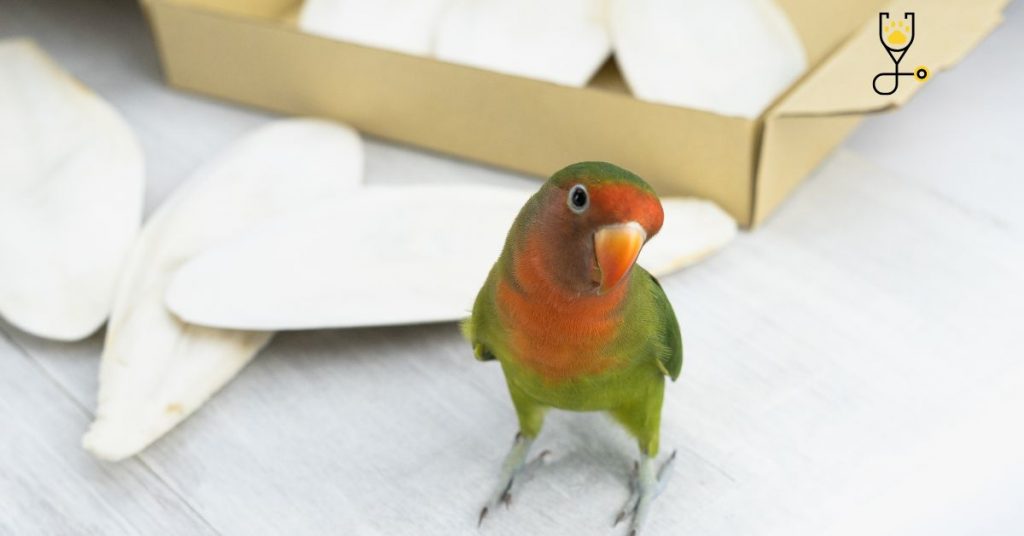
9. Enhances Mental Stimulation
The texture and flavor of the bone encourages birds to investigate and explore it further with their beaks, providing valuable mental stimulation that helps prevent boredom and feather-plucking behaviors.
10. Promotes Physical Exercise
Chewing and manipulating the cuttlebone is an ideal way to provide birds with physical exercise, which helps keep their muscles strong and healthy. This can also help prevent them from becoming overweight or obese due to a lack of activity.
11. Encourages Natural Behaviors
The abrasive surface of the cuttlebone allows birds to fulfill their natural instinctual behaviors such as preening, grooming, and foraging – all important activities that help promote good overall health.
Similar Reads: Some Behavior Problems of Pet Birds
12. Enhances Digestion
Due to its high calcium content, a cuttlebone can also aid in digestion by helping break down food more efficiently before it enters the digestive system. This helps ensure that nutrients are being properly absorbed and utilized.
13. Helps Reduce Stress Levels
Chewing and playing with the cuttlebone can also help reduce stress levels. This can be especially beneficial for birds that are scared of loud noises or sudden movements, as it provides them with a source of comfort and distraction.
14. Offers a Variety of Nutrients
Cuttlebones are rich in minerals and nutrients that are essential for bird health, such as calcium, magnesium, zinc, iron, manganese and phosphorus. These important vitamins and minerals help fortify the immune system while also promoting healthy bones and feathers.
15. Improves Overall Health
The combination of physical activity, mental stimulation, vitamins and minerals, along with the other benefits of a cuttlebone all work together to help promote good overall health in birds. From stronger bones to better digestion and improved behavior, there are numerous advantages that come from providing your feathered friend with this natural resource. With these many benefits, it’s easy to see why adding a cuttlebone to your bird’s cage is an excellent choice for their long-term well-being. So go ahead – give them something fun and beneficial at the same time! They’ll thank you for it!
Conclusion
Cuttlebones are an excellent addition to any bird owner’s aviary. Not only can they provide valuable mental stimulation and physical exercise for birds, but also offer important nutrients that help promote good overall health. They’re economical, come in various sizes to fit all types of birds, and last a surprisingly long time with proper care. With all these benefits, it’s easy to see why adding a cuttlebone to your bird’s cage is a great choice! It’s sure to keep them happy and healthy for years to come!
Frequently Asked Questions
With proper care, a cuttlebone can last for several months or even up to a year before needing to be replaced.
Cuttlebones are suitable for all types of birds, from parrots and cockatiels to canaries and finches. They come in various sizes so you can find one that’s just right for your feathered companion.
Yes! Cuttlebones offer numerous other benefits such as mental stimulation, physical exercise, improved digestion and better overall health. They also provide valuable vitamins and minerals that help keep your bird in peak condition.
Yes! Cuttlebones are an all-natural resource that is perfectly safe for birds to chew on. As long as you buy one specifically designed for pet birds, it should be 100% safe and non-toxic.
It’s best to keep a close eye on your feathered friend while they play with their new toy. This will ensure that no pieces of the bone are swallowed accidentally and that the cuttlebone isn’t getting broken into pieces.

